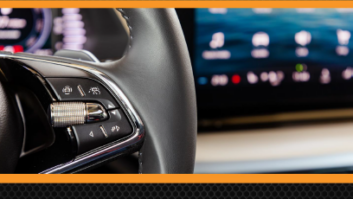Editor’s note: This story has been updated to include a statement from the National Association of Broadcasters.
Automakers have replied to U.S. Sen. Ed Markey’s letter urging them to maintain broadcast AM radio as a feature in electric vehicles and other future vehicles. But the auto industry’s response by no means offers any guarantees that the senior band will remain in the dashboard going forward.
Markey wrote in December to all the big automakers: Ford, General Motors, Stellantis, BMW and Kia among them. He asked for a thorough accounting of where AM radio receivers stand in the view of automakers and to inform him of any plans to discontinue access to AM in new cars.
The auto industry response comes from the Alliance for Automotive Innovation and appears to be a resounding non-endorsement of AM radio. In fact, the letter makes no mention of the industry’s intentions of keeping AM radio intact in the dashboard.
Markey’s letter to automakers had put a strong focus on the emergency alerting capabilities of AM radio: “A phase-out of broadcast AM in new vehicles could pose a significant communication problem during emergencies. Given AM radio’s importance for emergency communications and continued consumer demand, I urge your company to maintain the feature in its new vehicles,” he wrote.
[Related: “Some Serious Questions About AM Radio“]
However, the response from the industry focuses instead on utilizing emerging technologies for emergency alerting, including Wireless Emergency Alerts through mobile phones. Other advancements from the Federal Emergency Management Agency, like the Integrated Public Alert and Warning System (IPAWS), can be used “as redundant alert mechanisms,” the letter says.
The Alliance for Automotive Innovation even quotes the IPAWS Program Management Office and its Strategic Plan for FY2022-2026 as stating: “The public is moving away from radio and broadcast/cable television as the primary channels for news and information.”
The auto industry letter, provided to Radio World by the alliance, states that both the federal government and the automotive industry “recognize that the ways in which consumers receive information will change with innovation.”
It also points out that many AM radio broadcasters have adapted their services across the United States and the world.
“In North America, many AM broadcasters have made their content available via digital formats and compatible smartphone applications. In Europe, analog AM radio broadcasts have been replaced with Digital Audio Broadcasts (DAB).
“In Japan, all AM radio stations are also simulcast on FM. As new technologies enter the marketplace, our industry will continue to seek innovative, enhanced methods that drive the deployment of advanced technologies and promote safety,” the consortium writes.
[Related: “Help Farm Radio Fight for Radio“]
The Alliance for Automotive Innovation says it and its members are committed to maintaining consumer access to vital safety information.
“As part of this effort, we have been meeting with the National Association of Broadcasters (NAB) and are in the preliminary stages of engaging FEMA to understand better how consumers can continue to access emergency broadcast information both inside and outside the vehicle.”
In a statement provided to Radio World, the NAB’s senior vice president of communications, Alex Siciliano, said:
“We appreciate that the industry is being responsive to Sen. Markey as many policymakers have voiced concerns about removing AM radio from newly manufactured vehicles,” said Siciliano. “We have engaged in an ongoing and productive dialogue with the alliance since this letter was written in December, and we’ll continue to facilitate this dialogue between key stakeholders. As the backbone of the nation’s Emergency Alert System (EAS), AM radio plays a critical role in informing Americans and keeping them safe when disaster strikes.
“We know automakers do not want to alienate the nearly 48 million American who listen to AM radio each week, and we’ll continue fighting to keep this important service in cars,” he said.
The response from the auto industry was signed by Garrick Francis, VP of federal affairs for the Alliance for Automotive Innovation. The Washington-based trade association represents all of the major automakers. You can read the group’s letter here.












